Electric cars: why are the tires different from those of a gas car?
Companies making EVs tend to use different tires to improve efficiency, reduce noise and withstand torque. Here is what you need to know.

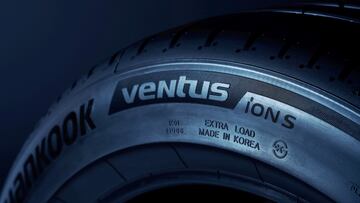
Although it doesn’t seem like it to the naked eye, electric cars are equipped with special tires whose compound, design, and structure differ from those fitted to cars with thermal engines that use diesel or gasoline. The difference stems from the fact that tires for electric cars have to deal with added weight to achieve maximum efficiency, keep quiet, and be able to handle the massive instantaneous torque that electric motors have.
Weight
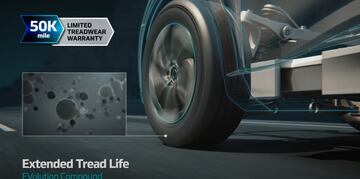
When comparing a gasoline car with an electric one of similar dimensions, the latter is heavier due to the mass of the batteries that, often weigh up to 1000 pounds. This means that even though mass is saved using an electric motor, the overall weight is still higher. This additional weight takes its toll on tires, with some studies showing that the rubber can wear out twenty percent faster on a zero-emission car compared to a gasoline-powered car.
Consequently, some designers have figured out that to limit wear and tear the rigidity of the rim must be increased, especially when it comes to the lateral load that is exerted on the wheel when cornering. Another aspect that helps with the expected mileage of electric car tires is their flatter contact patch, which helps distribute the load more evenly.
However, the compound of the tire itself is just as important, with a stiffer compound being seen to increase the longevity of the tire. Therefore, many tires used for EVs contain high-load resin and silica.
Efficiency
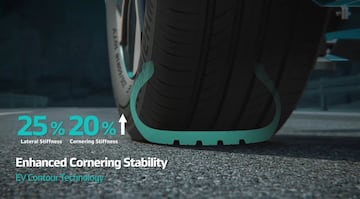
Efficiency and ensuring the battery can take drivers as far as possible is one of the most crucial aspects of electric vehicles. When it comes to tires, this is reflected in their coefficient of rolling resistance. Here, small changes can have a big impact, as being less efficient means you need a bigger battery, which in turn adds more weight and further reduces efficiency.
Put in numbers, the difference between an average tire and a good one could be up to 50 kilometers of autonomy.
In itself, most of the improvement in rolling resistance comes from the curing processes of the tires. The latter is the process of heating rubber in the presence of sulfur to form a compound. Since natural rubber reacts poorly to temperature variations and is not durable, meaning these additional processes are very important to protect the tire’s integrity.
In the case of curing, the tire must be heated while pressure is applied to mold it. This not only gives the tire its final shape but also ensures a good bond between it and the reinforcing compounds within the structure.
Naturally, a larger contact patch allows pressure to be distributed more evenly, which reduces the aforementioned drag.
Noise
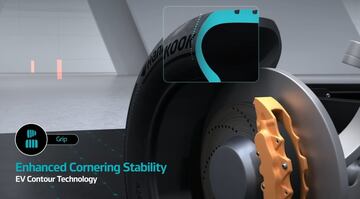
The engines used in EVs are generally quieter than gasoline or diesel cars, meaning that any other noise immediately becomes more noticeable.
With the objective of not generating sound during rolling, the design of the tires is unique, in that it works to break up and absorb the resonance generated within the groove.
Another feature is the expanding lateral grooves, which start narrow and expand toward the outside of the tire. That design is meant to let water escape and prevent noise from doing the same.
Another feature that ensures that the side grooves are unevenly spaced is known as multi-tone sequencing. This interrupts the constant rhythmic nature of the noise. Through clever engineering, this design can even be optimized to reduce overall noise.
On the other hand, the interior of the rims does not have so many innovations. Still, there is a foam insert that helps absorb the vibration generated by rolling. Consequently, this prevents vibration from traveling up the wheel, through the suspension, and into the chassis and cab.
Torque
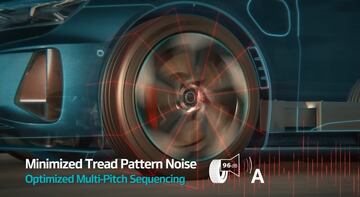
When it comes to torque, EVs typically do not only have more but deliver it instantly compared to their gas-powered counterparts. Thanks to the batteries, there is some added weight, giving the car more mechanical grip, which helps with acceleration.
But there’s also the question of stopping that extra weight, so electric car tires need to be able to provide the most longitudinal grip possible, whether accelerating or decelerating. This brings us back to stiffness, and there are a few tricks that are used on EV tires.
The most important part is the internal structure. Some technologies used to secure the structural integrity of the tire include seamless bead wires, folded edge tape, and high-strength steel belts. Together with a reinforcing layer of the fiber structure and the tire compound itself, these factors increase stiffness. Another key feature of this tire is its wide center rib pattern, allowing it to benefit from increased traction.
Conclusion
Despite the challenges posed by the traditional features of electric vehicles, solutions do exist, and combining them leads to a great result.
However, there are a couple of caveats. First, electric car tires are considerably more expensive, with prices for some models exceeding $300 per tire, similar to what you would usually pay for something on a high-end sports car or luxury vehicle. Even so, they wear out faster than those for gasoline-powered cars.
So although there is a temptation to buy the cheapest option, the downsides are not worth it, especially considering that as time passes, more affordable electric car tires will appear on the market. That will create competition and soon drive down the average price with decent performance.